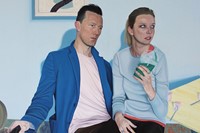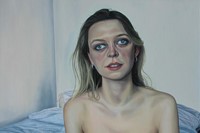Familiar and quietly disconcerting, the British artist's latest collection of portraits is a wry reflection on the prevalence of egotism in contemporary culture
Artist Tristan Pigott’s most recent collection of paintings, wittily entitled Dead Natural, targets both the way sitters traditionally pose for a painting, and the way we painstakingly choreograph our own ‘self-portraits’ on social media. His work takes the form of painterly portraits, but rather than following the contemporary zeitgeist, Pigott questions the human ego; in his world we are all far more awkward than our Instagram-filtered selves appear to be.
Pigott graduated from Camberwell College of Arts in 2012, and since has been making his mark on the art world. This year has seen him tick off a triumvirate of successes; his painting The Cynic was selected for the esteemed BP Portrait Award show at The National Portrait Gallery, while his still life drawing Save The Cacti was accepted into the Royal Academy Gallery summer show, and Dead Natural made a solo show at The Cob Gallery in Camden.
Part of Pigott’s appeal lies in his willing criticism of contemporary culture; he distorts and abstracts the narrow boundary dividing performance and everyday reality with the knowing deftness of a participant. In his newest pieces, Big Softie and Selfie as Lina Moy, he reveals the silent duality of desire, while also exposing the awkward self-consciousness of his subjects. On first glance, for example, the subject of Big Softie appears to be waiting for his spaghetti to soften, but no sooner has the viewer notice this than they are drawn to his hands casually in his underpants, and to his undisturbed gaze which looks peacefully into the distance; Piggott depicts a strange world of everyday surrealism, and a slightly uncomfortable sexuality.
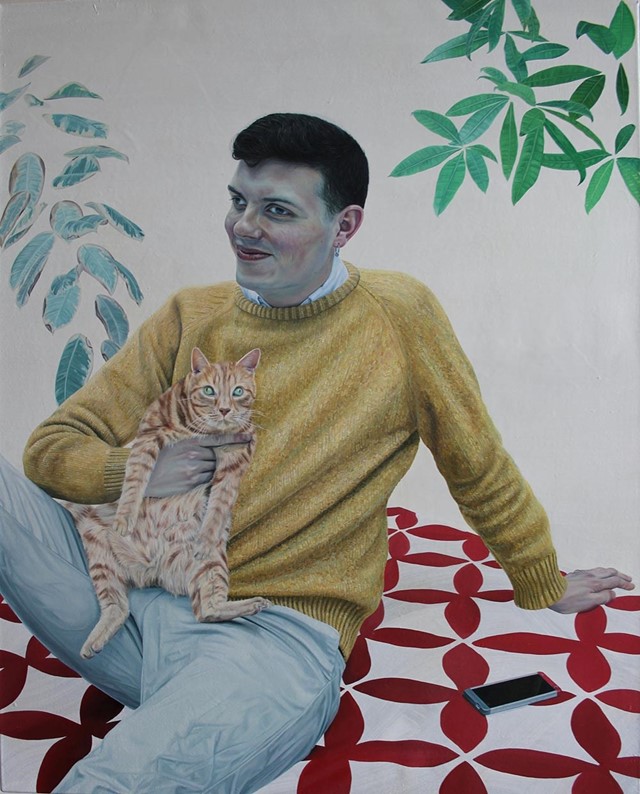
On the connection between the artist and the ego…
“Ego is such a broad term. I usually think of it as the characteristics that make up a person, giving them their sense of comfort and self-worth. I think it’s interesting relating that to someone’s work; we’re all guilty of relying on style, technique and routine, which shouldn’t be the norm for creative people.”
On social media and self-portraiture…
“I want my work to be conscious of how narcissistic portraiture and social media can be. Instagram and Facebook, among their many uses, have given people control over what personality they want to project, in a similar way to how portraiture used to.”
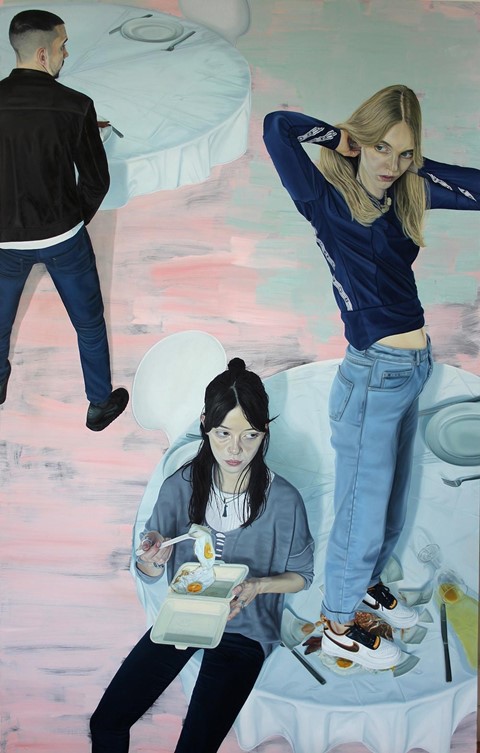
On the process behind his work…
“Everything starts in a sketchbook. I layer up the paint to create more realism in the faces. With the latest paintings, I’ve done the same to the backgrounds, but sanded down the layered paint, to create the opposite effect – that way is draws attention to the two-dimensional surface.”
On the relationship between the sitter and the artist…
“My subjects tend to be friends, as they’re easy prey. The cliché with painting people is that it’s 50% sitter, and 50% artist, but that’s probably kind of true. When I’m painting people I want to explore their psychological states, and I do so by displaying my own interest in the cyclical nature of everyday life. So you take everyday actions, such as eating and drinking, and make these mirror similarly habitual and automated psychological traits, like arrogance and anxiety.”
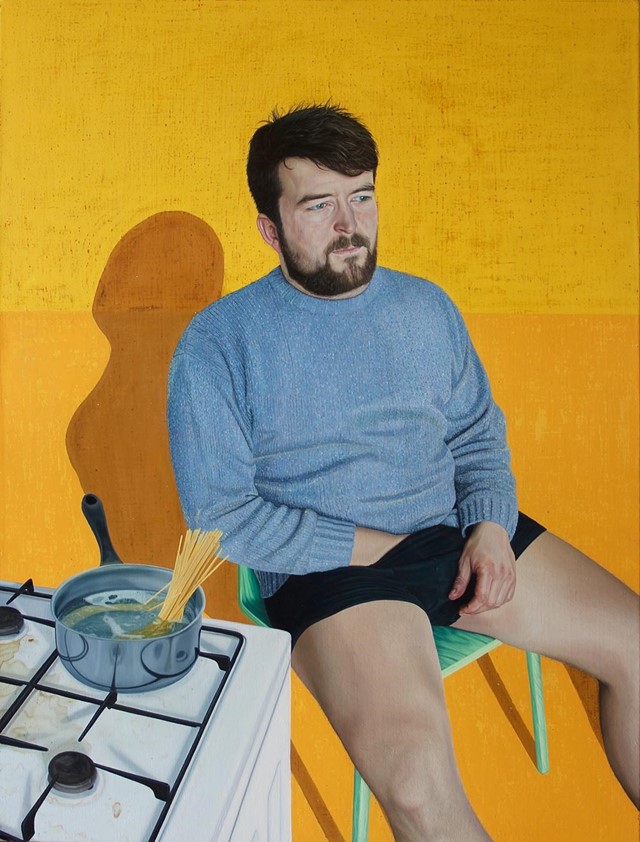
On his attraction to still life painting…
“It’s a very specific visual language when you paint people, with many limitations. It was a pretty natural progression to play around with still lifes, due to the flexibility of the subject. I’m playing with the traditional ‘nature morte’ motifs, contemporizing their narratives.”
On the concept behind his nudes…
“The aim with the nudes and semi-nudes, like Elastic, is to highlight the false narrative created by painting, while subverting the idea that portraiture should be flattering. The suggestion of action plays an important role. It provokes the viewer’s interpretation, as opposed to simple objectification.”

